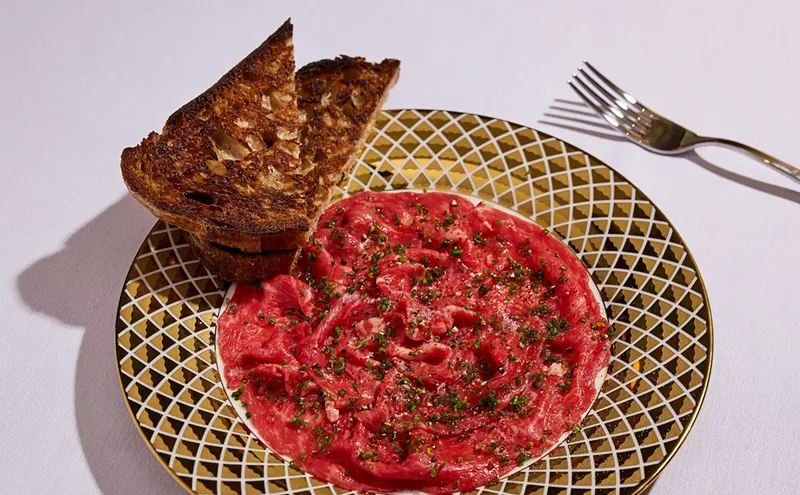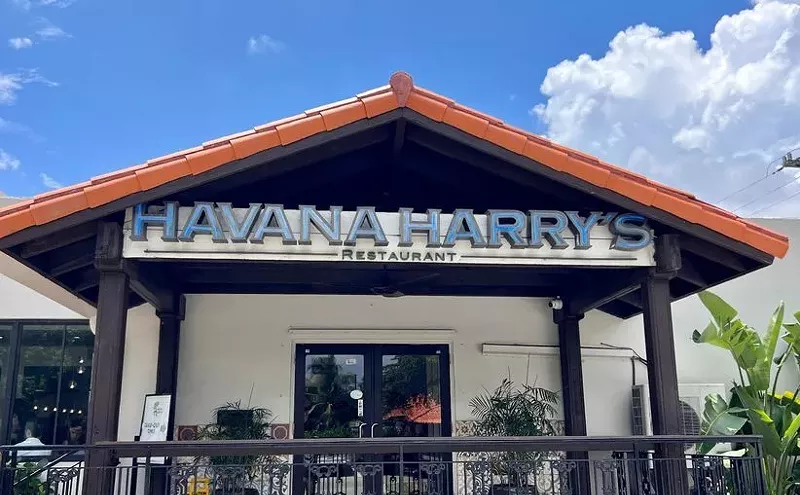Crystal chandeliers? Please. "The only shiny things I like to see hanging," she confided, "are some lacquered ducks. With the bills still attached." White tablecloths also set off her alarm bells.
I'd never seen my colleague happier than the time I enlisted her for a review dinner at the late, great Macao, a place where the major design element was linoleum, and we couldn't find a table that had all four legs touching the ground at the same time. "This place looks about right," she beamed, deftly jamming a matchbook under the worst wobbling leg. "I wonder if the salt-and-pepper shrimp will have the heads on." They did.
At Tony Chan's Water Club, salted jumbo shrimp came with neither heads nor shells. This sanitized treatment might well please the squeamish, but it's a warning buzzer for those who prefer the authentic Chinese preparation for the right reason -- not because of food snobbery but because shrimp with heads and shells intact simply taste better. With a location in an upscale hotel/condominium complex and interior décor featuring a panoramic view of Biscayne Bay, the restaurant also clearly did not qualify as any kind of dump. There was valet parking at the front door, and the walk through the glitzy lobby to the eatery must have been the full length of Mott Street in New York's Chinatown.
The most spectacular view, however, turned out to be the one through the glass wall to the kitchen. And if the shrimp were disappointing (lacking, oddly, even a hint of the "pepper salt" described on the menu, much less heads and shells), most other dishes were head and shoulders above the fare in all but a few Miami Chinese restaurants.
Yu pan quail was possibly the best treatment of quail I've had anywhere. Many Chinese eateries offer starters featuring some sort of minced poultry (often called something like "ants climbing the tree") served with lettuce leaves meant for wrapping the mixture. But the mince is usually chicken, and usually dry. Further, do-it-yourself wraps tend to be mighty messy. Tony Chan's ground quail, mixed with diced mushrooms and crunchy bamboo shoots, was remarkably juicy and seasoned to perfect bold succulence. It was also served in perfectly formed minibowls of lettuce that stayed miraculously intact to the last bite for dribble-free eating.
Honey walnut shrimp proved to be not whole shrimp with candied walnuts, the common treatment, but a monster-size prawn stuffed with a minced shrimp mixture and sliced like a sushi roll. It was excellent, though quite sweet.
Peking duck, listed as an appetizer, was actually a two-course meal for two -- three courses, for an extra $7.95. I'd highly recommend springing for the whole shebang, which is how the dish is served in China. It's rare to find a restaurant here that'll bother. (The third dish is soup, though owing to America's less leisurely dining pace, it must be made with a different duck.) The starter was the duck's skin, sliced tableside by a lightning-fast carver who removed every bit of fat from the crisp skin's underside before wrapping bite-size pieces in hoisin-moistened pancakes. The only flaw was the absence of the julienned scallions traditionally wrapped with the skin. Inexplicably, tasteless shreds of iceberg lettuce were substituted.
Duck soup, normally served last, came next, and was quite a formidable affair since the carcass had merely been cut up, rather than strained from the broth. Those too fastidious to eat with their hands might find this mélange hard to negotiate, but my party loved it; there was plenty of tasty meat on those bone chunks. Pieces of crunchy bok choy (Chinese cabbage) also enlivened the full-flavored soup. The remaining duck meat then arrived in a gingery stir-fry, with lots of fresh veggies. For anyone who's been curious to try China's most famous banquet specialty, this is the place.
Though there's nothing particularly authentic about lemon chicken, I've had a weakness for the fried preparation since the heyday of the legendary Pearl's Restaurant in New York. At that pioneer upscale Chinese nightspot, the secret ingredient in the chicken's thick, tangy-sweet sauce was not fresh citrus but the better part of a bottle of lemon extract. (Don't start. Craig Claiborne loved the stuff.) At Tony Chan's, sadly, the main taste was vanilla extract -- and it was not an improvement. Fortunately the sauce was served on the side and thus easy to ignore. The battered chicken itself was nicely seasoned and well cooked, and the bed of savory sautéed Chinese greens hidden underneath was a vast improvement on Pearl's typical Americanized sweet-and-sour veggie mix of mostly decorated carrots and pineapple.
Steamed fish sounds austere, but proved to be a wonderfully moist sea bass fillet, topped with garlic, cilantro, scallions, and ginger strips. A thin but flavorful soy-based sauce that subtly balanced salt with just a touch of sweetness ideally complemented the delicate fish without overwhelming it.
A flurry of vegetables with faded coloration -- the kind associated with overcooking -- gave pork yee mein a limp appearance that wasn't promising. But the suspicious color had actually been muted by marination in brine, making them terrifically tasty as well as crunchy. The noodles, described as "wide soft" (but actually more like thick Chinese "long-life" mein), were al dente chewy. And the pork strips, while not plentiful, were strongly imbued with fragrant spices, adding considerable savor to the dish.
Dry sautéed string beans are found everywhere. But Tony Chan's beans were superior to most, owing to the inclusion of ground pork as well as preserved vegetables. It's possible to make a vegetarian version of this dish; in deference to noncarnivores, many places do. But Fuchsia Dunlop's Sichuan Cookery (a Brit import hailed as the first authentic Sichuan cookbook in English) says pork is how it's done right. And it does add rich complexity, making the beans much more satisfying.
Tony Chan's includes the obligatory small sushi bar, if you must. But our town doesn't lack decent Japanese food.
Adding to the food's pleasure was the service, which was consistently cordial throughout three visits, despite the fact that my dining buddies had all deliberately dressed down to dump-dining level. Come to think of it, with the exception of Kon Chau (an unadorned dim sum place), none of my current favorite Miami Chinese restaurants -- Tropical, Pao, and Miss Yip -- is even vaguely dumpy. What a weird city. But add Tony Chan's to the list.











